page 5
http://threesology.org
| What is time pg 1 | What is time pg 2 | What is time pg 3 | What is time pg 4 | What is time pg 5 | What is time pg 6 | What is time pg 7 | Time Travel Considerations |
Then again, is the human type of perception enabled to grasp the whole universe, or merely see but a sliver, a small portion relative to how we may want to slice existence according to our assumptions based on religious faith, scientific fact, science fiction, etc.?
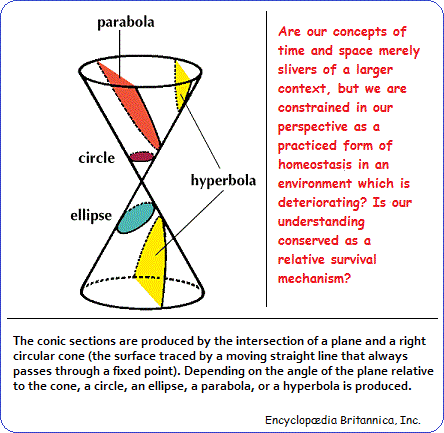
Whether we use a graph with squares, circles, or whatever suits your fancy, an attempt is being made to establish some parameters with which to work such as can be described in the manner one attempts to solve a puzzle overlayed with a picture that is frequently shown on the box cover. Whereas many use the lay-out-the corners and edges method, others attempt to connect pieces based on some identifiable scene that may occur anywhere within the size of the puzzle. Physicists and other scientists may also use this method in their work. So too do theologians, philosophers, mathematicians, gardeners, architects, bakers, butchers, etc... And when someone can't identify some parameter they may simply make a guesstimation based on whatever evidence they can bring to bear within the constraints of believability... that may or may not be identified as a flexible (temporary) boundary line that can be altered as new evidence or ideas warrant one or another adoption or deletion. But puzzles come in a variety of shapes, sizes and requirements for addressing one or another issue such as the "What is Time?" question. Whereas some questions may provide easily identifiable practicalities that reveal one or more ideas which help to establish some new way of looking at many different problems, while others may exist only in some intellectual realm of pseudo-tangibility and never produce more than a personalized artistic flavor, color and representative medium.
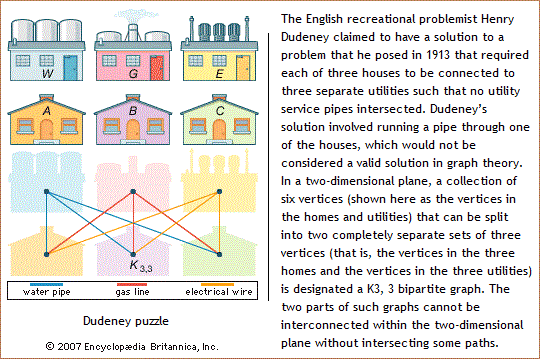 |
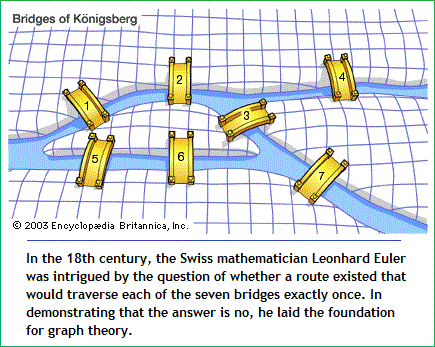 |
With respect to space and time, we need to take a brief look at matter. For example, is Dark Matter/Energy (comprising the blackness of space), like the soot residue of an expended bullet or charge... such as when black powder was used for muskets, fireworks, toy caps (for cap guns) and the like? If Dark Matter can be viewed as the spent portion of a (gunpowder) charge, then Dark Energy would then be comparable to that portion of a charge that remains intact... like firecrackers which did not explode when a string of them were lit. Just as in early firearms which exhibit a smooth bore, we can find this same characteristic in the shooting of fireworks such as the tube of Roman candles, tubes for rocket flares and various types of tubes (pop bottles, pipes, etc...) used by those firing bottle rockets. With such an observation in mind, let us ask if the Universe is a cylindrical-like space exhibiting both (?) smooth-bore and rifled-bore characteristics in that planets and other matter exhibit either smooth bore tumbling and/or rifled bore twist-spin, suggesting that the "particle" and "wave" configurations assigned to electromagnetic radiation and particles is a mind-set that is deliberately being resuscitated again and again because of experimental designs representing different tube-like structures in various forms of re-creations.
These tube-like structures, whether set (typically) in a linear or circular form (though other models are possible with greater cost and complexity) whose "barrel" dimensional constraints and directions may be created by magnetic field constrictors, have not as yet yielded what type of spin (tumble and/or twist) are being exhibited by particles... much less wave patterns. While the characteristic called spin is said to be non-arbitrary and must exhibit a particular (time dependent) rate of say an integer (1, 2, ...) and/or half integer (1/2...). Whereas one can speak of angular momentum and that (for example) two electrons in a helium atom must (according to the Pauli exclusion principle) have opposite spin directions ("atom." Encyclopædia Britannica, 2013.), we do not customarily think in terms of miniature experiments taking place on the quantum level as an inherent characteristic; though we note that atoms can be referred to as tiny electro-magnets which create "tunnels" or "barrels" along which particles (and waves) travel and that there can be more than one barrel with or without opposing twists or riflings. In fact, the image following illustrates a magnet used to drive particles along a tube. That which we attempt to display on the macroscopic level may be an attempt to describe that which is taking place on the microscopic level... though our efforts are crude.
With respect to magnetism, particles and a twisting or spinning motion:
Magnetic fields such as that of the Earth cause magnetic compass needles and other permanent magnets to line up in the direction of the field. Magnetic fields force moving electrically charged particles in a circular or helical path. This force—exerted on electric currents in wires in a magnetic field—underlies the operation of electric motors. ("Magnetic Field." Encyclopædia Britannica Ultimate Reference Suite, 2013.
Interestingly, under some conditions particle spins can be forced back on their own path.
A Magnetic Mirror refers to a static magnetic field that, within a localized region, has a shape such that approaching charged particles are repelled back along their path of approach.
A magnetic field is usually described as a distribution of nearly parallel nonintersecting field lines. The direction of these lines determines the direction of the magnetic field, and the density (closeness) of the lines determines its strength. Charged particles such as electrons tend to move through a magnetic field by following a helical path about a magnetic field line. If the field lines along the path of the particle are converging, the particle is entering a region of stronger magnetic field. The particle continues to circle about the field line, but its forward motion is retarded until it is stopped and finally forced back along its original path. The exact location at which this mirroring occurs depends only upon the initial pitch angle describing its helical path. Two such magnetic mirrors can be arranged to form a magnetic bottle that can trap charged particles in the middle. ( "Magnetic Mirror." Encyclopædia Britannica Ultimate Reference Suite, 2013.)
When speaking of "spin" with respect to atomic particles, we can cite three general values:
- There is zero spin for all nuclei with even number of neutrons and protons.
- There is a half integer associated with those having an odd mass number.
- There is an integer associated with those having an even mass number.
However, this does not necessary tell us whether a presumed "spin" represents an actual spin or a tumble. If a round particle like a round rifle shot is fired, a tumbling motion may not be easily detected unless the irregularity of the shot is noted against a target. Yet even if a cylindrically pointed bullet is fired from an unrifled barrel, the head-over-heel tumbling effect may fire "true" enough at a target that the idea of tumbling is though absent or negligible. Because it is thought that zero energy is an unreachable or non-existent event since this would violate the Uncertainty Principle in that the lack of energy would permit the position and velocity of a particle to be measured since it would not be moving. Let us look at a reference thereof:
Also called Heisenberg uncertainty principle, or indeterminacy principle (It refers to a) statement, articulated (1927) by the German physicist Werner Heisenberg, that the position and the velocity of an object cannot both be measured exactly, at the same time, even in theory. The very concepts of exact position and exact velocity together, in fact, have no meaning in nature. Ordinary experience provides no clue of this principle. It is easy to measure both the position and the velocity of, say, an automobile, because the uncertainties implied by this principle for ordinary objects are too small to be observed. The complete rule stipulates that the product of the uncertainties in position and velocity is equal to or greater than a tiny physical quantity, or constant (h/(π), where h is Planck's constant, or about 6.6 X 10-34 joule-second). Only for the exceedingly small masses of atoms and subatomic particles does the product of the uncertainties become significant. Any attempt to measure precisely the velocity of a subatomic particle, such as an electron, will knock it about in an unpredictable way, so that a simultaneous measurement of its position has no validity. This result has nothing to do with inadequacies in the measuring instruments, the technique, or the observer; it arises out of the intimate connection in nature between particles and waves in the realm of subatomic dimensions. Every particle has a wave associated with it; each particle actually exhibits wavelike behaviour. The particle is most likely to be found in those places where the undulations of the wave are greatest, or most intense. The more intense the undulations of the associated wave become, however, the more ill defined becomes the wavelength, which in turn determines the momentum of the particle. So a strictly localized wave has an indeterminate wavelength; its associated particle, while having a definite position, has no certain velocity. A particle wave having a well-defined wavelength, on the other hand, is spread out; the associated particle, while having a rather precise velocity, may be almost anywhere. A quite accurate measurement of one observable involves a relatively large uncertainty in the measurement of the other. The uncertainty principle is alternatively expressed in terms of a particle's momentum and position. The momentum of a particle is equal to the product of its mass times its velocity. Thus, the product of the uncertainties in the momentum and the position of a particle equals h/(π) or more. The principle applies to other related (conjugate) pairs of observables, such as energy and time: the product of the uncertainty in an energy measurement and the uncertainty in the time interval during which the measurement is made also equals h/(4?) or more. The same relation holds, for an unstable atom or nucleus, between the uncertainty in the quantity of energy radiated and the uncertainty in the lifetime of the unstable system as it makes a transition to a more stable state. Source: "uncertainty principle." Encyclopædia Britannica Ultimate Reference Suite, 2013. |
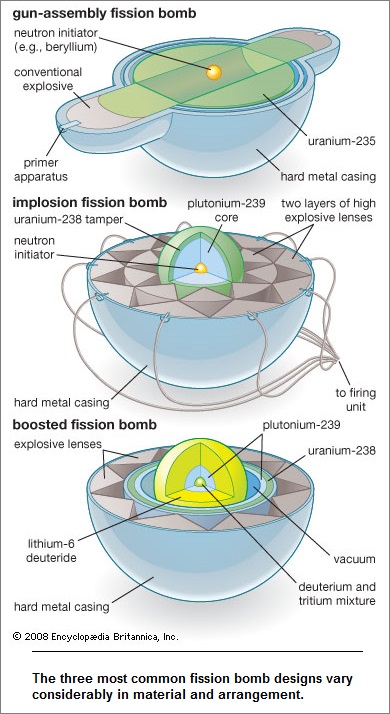
Whereas particles may appear to scatter about randomly, they are confined within spaces that may or may not be in the form of a familiar firearm barrel that we may alternatively be describe as a chamber which may or may exhibit an entry and/or exit point such as in the case of a designed explosion or implosion. And example of this is the design of atomic bombs which could benefit from a conveyor type of system.

The topic of spin is an interesting one with respect to time, since measurements of time have typically involved some cyclical perception such as the hands of a clock going in a circle. Hence, one might imaginatively conjure up the vision of a helical spin to the motion of time proceeding along the direction of an arrow. By extention of the circular event sought out in other phenomena under different names, we may note whirlwinds, whirlpools, the whirl of maple seeds falling to the ground, and the spinning wheel once used to twist wool, cotton or other fibers into thread or yarn to be used for clothing. Even emotions, mental states and physical behavior or tools can be described with spinning motions such as a whirl-wind romance, love makes one dizzy, screw driver, circular saw, bowling, sports ball propelling, spinning lures for fishing, making one's way around a room full of guests, a well-rounded education, doing things in a a roundabout way, etc... Not to mention the whirls in plant leaf arrangements, shells of garden snails, and the circularity of some philosophical statements which in fact may represent a spiral whose windings may alternatively consist of tightly or loosely wound strings of continuity suggesting repetition, but actually describe a periodic overlap suggested in the idea that history (a time defined idea and/or event) appears to repeat itself, at least in some fashion for some events... All of which can bring us to a discussion of the wheel whose trail of development may suggest how the concept of time was similarly created and more importantly, why has the shape of the wheel like the shape of time not been improved on once a set image took up residence in our thinking?

Are both time and the wheel repetitive circular events and objects or circular in the sense of being a spiral whose coiled movements of momentum are of a spiraled or helical configuration that can exist as either both tightly and/or loosely wound segments which are otherwise described as discreet units of time (seconds, minutes, hours... etc...)? Or are such segments a human contrived artificiality which hinders a more accurate grasp of time as a phenomena that requires a different label in order to discern a clearer description for purposes of analysis and varied application (such as time travel, traveling through space in small periods of time, etc...)?

Different lengths and configurations can be used as well as barrels which appear to exhibit a conveyor belt relativity in which a series of smooth-rifled sequences alternate positions at the barrel's end to create different circumstances of either a smooth or rifled particle effect. The ability to detect a "barrel"-like configuration may be more difficult if it were invisible to the naked eye or conventional instrumentation, and only the smooth or rifled orientation could be readily accessed. If neither instance were appreciably occasioned to observation, would the idea of a smooth or rifled barrel even come to mind based on the behavior of particles whose trajectories may not be always straight, but behave as if different configurations of charge and bullet/ball/pellet/shot were used for different settings?
Then again, instead of a logitudinal conveyor belt image, one might think in terms of a rotating barrel configuration like that seen in a gatling gun, except only one barrel is being used instead of multiple ones. The single one would be spinning along its axis and not polar end over polar end. With respect to colliders, discrepancies in magnetic field strength could well precipitate differences in particle behavior before collisions occur, thus alterning the patterns on target mediums. The Conveyor belt may well be viewed as a chain drive mechanism in order to accommodate additional analogies such as mono, di, and tri-peptide chains... since we alternatively speak of "chain reactions" with respect to atomic nuclei.
By looking at the following image from a particle physics point of reference, the idea of "orbital shells" takes on a new meaning because this Archimedian screw conveyor belt system illustrates momvent in one direction, though alternative directions could be employed. With respect to the topic of time, time can be viewed as a superimposed series of events like the boxes moving upwards above one another. If the machine and belt were transparent, the boxes (events of time) would appear to overlap or repeat from one generation to the next.

In as much as one may be thinking in terms of a straight, non-curved conveyor-belt like barrel, particles exhibiting a fluidic condition may not exit a barrel in a spinning motion for great distances beyond the tip of the barrel, like water be propelled by a rifled Archimedian Screw.

While fluidic conditions in eddy currents has been mentioned, the ideas of turbulence or chaos and fractions (fractals) have not. This is an important consideration when speaking about time since time may act like a fluid, gas or solid in different contexts such as producing crevices, waves, whirlpools, and other movements such as we might refer to as cascades, undulations or ripples in time or the assumed space-time continnum. And if we say that a sustained continuance thereof is a whole number (an integer), than an intermittancy might well be described as a fraction (non-integer). Let us take a look at a short article on chaos theory, keeping in mind that we are applying its references to the topic of time:
(Chaos theory) in mechanics and mathematics, (is) the study of apparently random or unpredictable behaviour in systems governed by deterministic laws. A more accurate term, "deterministic chaos," suggests a paradox because it connects two notions that are familiar and commonly regarded as incompatible. The first is that of randomness or unpredictability, as in the trajectory of a molecule in a gas or in the voting choice of a particular individual from out of a population. In conventional analyses, randomness was considered more apparent than real, arising from ignorance of the many causes at work. In other words, it was commonly believed that the world is unpredictable because it is complicated. The second notion is that of deterministic motion, as that of a pendulum or a planet, which has been accepted since the time of Isaac Newton as exemplifying the success of science in rendering predictable that which is initially complex. In recent decades, however, a diversity of systems have been studied that behave unpredictably despite their seeming simplicity and the fact that the forces involved are governed by well-understood physical laws. The common element in these systems is a very high degree of sensitivity to initial conditions and to the way in which they are set in motion. For example, the meteorologist Edward Lorenz discovered that a simple model of heat convection possesses intrinsic unpredictability, a circumstance he called the "butterfly effect," suggesting that the mere flapping of a butterfly's wing can change the weather. A more homely example is the pinball machine: the ball's movements are precisely governed by laws of gravitational rolling and elastic collisions—both fully understood—yet the final outcome is unpredictable. In classical mechanics the behaviour of a dynamical system can be described geometrically as motion on an "attractor." The mathematics of classical mechanics effectively recognized three types of attractor: single points (characterizing steady states), closed loops (periodic cycles), and tori (combinations of several cycles). In the 1960s a new class of “strange attractors” was discovered by the American mathematician Stephen Smale. On strange attractors the dynamics is chaotic. Later it was recognized that strange attractors have detailed structure on all scales of magnification; a direct result of this recognition was the development of the concept of the fractal (a class of complex geometric shapes that commonly exhibit the property of self-similarity), which led in turn to remarkable developments in computer graphics. Applications of the mathematics of chaos are highly diverse, including the study of turbulent flow of fluids, irregularities in heartbeat, population dynamics, chemical reactions, plasma physics, and the motion of groups and clusters of stars. Source: "chaos theory." Encyclopædia Britannica Ultimate Reference Suite, 2013. |
When speaking of tubes it is necessary to include a reference to those used in the electronics industry and superceded the usage of the integrated circuit (IC), but that the IC has not completely eliminated the need for using such tubes.
|
Electron Tube (also called vacuum tube) 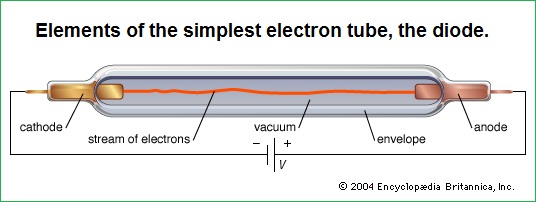 (It is a) device usually consisting of a sealed glass or metal-ceramic enclosure that is used in electronic circuitry to control a flow of electrons. Among the common applications of vacuum tubes are amplification of a weak current, rectification of an alternating current (AC) to direct current (DC), generation of oscillating radio-frequency (RF) power for radio and radar, and creation of images on a television screen or computer monitor. Common types of electron tubes include magnetrons, klystrons, gyrotrons, cathode-ray tubes (such as the thyratron), photoelectric cells (also known as phototubes), and neon and fluorescent lamps. Until the late 1950s, vacuum tubes were used in virtually every kind of electronic device—computers, radios, transmitters, components of high-fidelity sound systems, and so on. After World War II the transistor was perfected, and solid-state devices (based on semiconductors) came to be used in all applications at low power and low frequency. The common conception at first was that solid-state technology would rapidly render the electron tube obsolete. Such has not been the case, however, for each technology has come to dominate a particular frequency and power range. The higher power levels (hundreds of watts) and frequencies (above 8 gigahertz [GHz]) are dominated by electron tubes and the lower levels by solid-state devices. High power levels have always been required for radio transmitters, radar systems, and implements of electronic warfare, and microwave communications systems may require power levels of hundreds of watts. Power in these cases is frequently provided by klystrons, magnetrons, and traveling-wave tubes. Extremely high average power levels—several megawatts at frequencies above 60 GHz—are achieved by gyrotrons; these are used primarily for deep-space radars, microwave weapons, and drivers for high-energy particle accelerators. 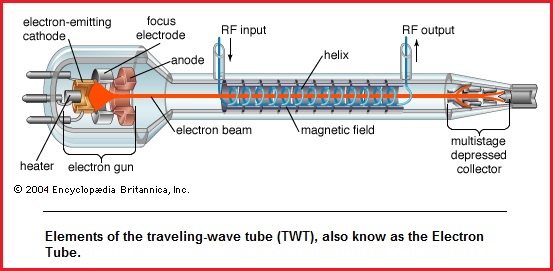
Vacuum tube technology continues to advance, because of a combination of device innovation, enhanced understanding through improved mathematical modeling and design, and the introduction of superior materials. The bandwidth over which electron tubes operate has more than doubled since 1990. The efficiency with which DC power is converted to RF power has increased up to 75 percent in some devices. New materials, such as diamond for dielectrics, pyrolitic graphite for collectors, and new rare-earth magnets for beam control, greatly improve the power handling and efficiency of modern electron tubes. Source: "electron tube." Encyclopædia Britannica Ultimate Reference Suite, 2013. |
Do particle accelerators need to be fashioned with rifling in order to take advantage of the already present natural spin? Can magnets be used to create a rifling effect? What will accelerated spinning due to particle behavior? Will different particles be better suited for rifling? Do particles have torque? Can particle torque be altered like the effect of using a light or heavy flywheel for either road racing or vehicle launching during a drag race? What sort of track is better... or must it be dictated by so-called real world practicalities?
When comparing the rifling in straight rifles to rifling which could be used in circular or figure-of-eight tubular pathways, the idea of having a circular shaped rifle would appear to dumbfound most people unless they could automatically transfer their thoughts from bullets to subatomic particles. If we were to construct a circular rifle or hand gun, the mechanics involved to get a bullet to traverse a circle lined with magnets used to acclerate speed and spin and then direct the exit along some alternate route may bring to mind that a particle, like a bullet, favors a straight trajectory until acted upon by other forces such as a initial gun powder charge, loss of speed, gravity, wind, humidity, etc... So when looking at a particle accelerator that essentially uses one particle (bullet) to collide into another as the (moving) target, some readers may or may not then think in terms of an expression of time except for some conventional beginning and end description.
 | |
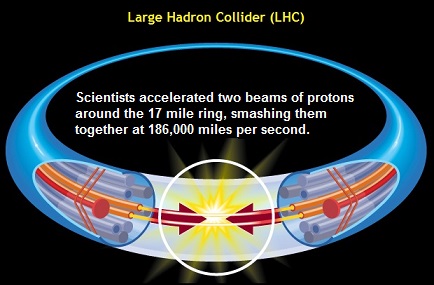 |
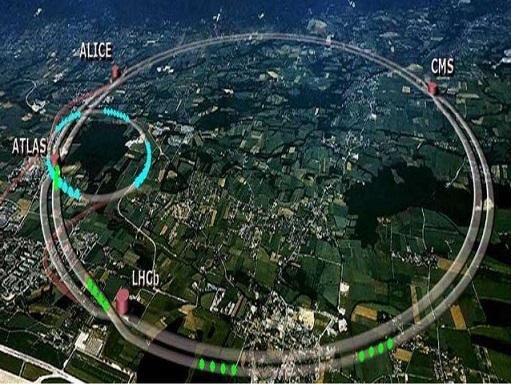 |
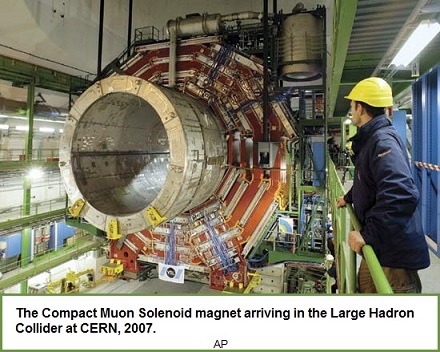 |
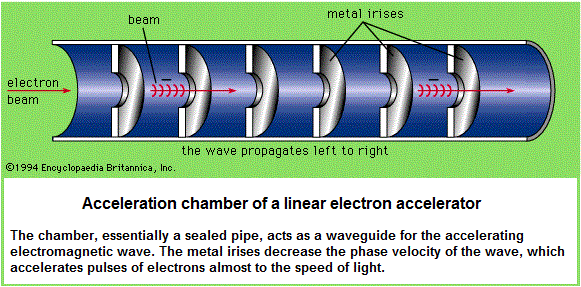 |

| |
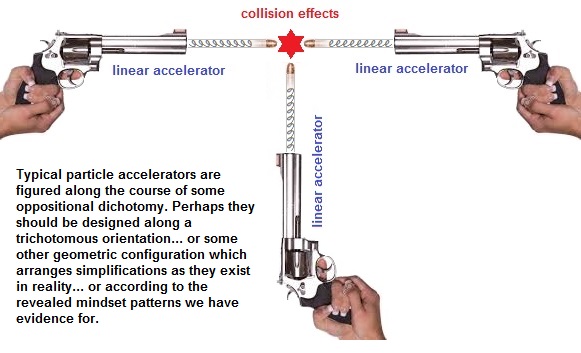 |
|
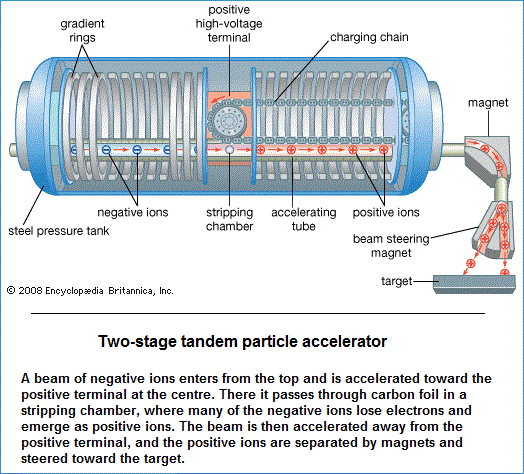
|
 |
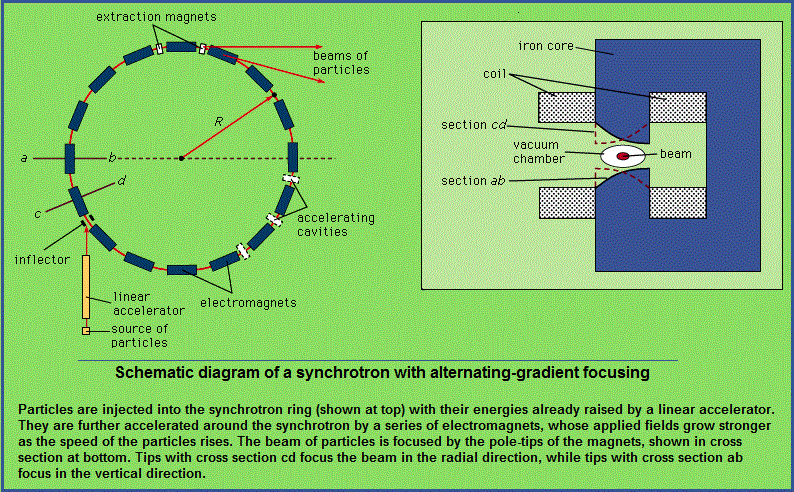 |
|
If we view the atomic particles known as protons, neutrons and electrons as different types of barrels that may (assumedly) shoot two or more subatomic bullets (quarks, etc...) at the same time, how could this be accomplished in the same singular barrel... or is there a split (bi-... trifurcated, etc.) barrel which slices the bullet into parts, but we are unable to see this due to our perceptual distance from the surface of the bullets? Whereas by convention we may think of atomic particles as bullets, we are not accustomed to think of them as the exit portal of an acceleratior such as a gun barrel. However, some readers may be asking what has this got to do with a discussion about time? Can't time be discussed of in non-abstract terms which rely on exmples from say art, literature or religion instead of a particular science? Is time more closely related to non-science than some scientific genre of exploration? Or are both insufficient? Perhaps you prefer to discuss time in relation to some human relationship instead of some non-biological relationship such as amongst numbers. For example, would you prefere to have a watch which used colors instead of numbers? And yet, what of those that are color blind, would they be without "colored" time? Is time reliant upon sight?
Page initially created: Thursday, 16-Nov-2017... 05:10 AM
Initial Posting: Sunday, 15th-April-2018... 8:08 AM
Updated Posting: Tuesday, 29th-May-2018... 12:03 PM
Herb O. Buckland
herbobuckland@hotmail.com
